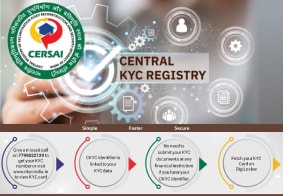CKYC Registry
-
Customer Service Contact us Service request Locate a branch
Find all the help you need
Scan the QR, get our app, and find help on your fingertips

Help CenterSupport topics, Contact us, FAQs and more
-
Login
Are you ready for an upgrade?
Login to the new experience with best features and services
-
Login
Are you ready for an upgrade?
Login to the new experience with best features and services
- Accounts
-
Deposits
IDFC FIRST Bank Deposits
View all Deposits -
Loans
IDFC FIRST Bank Loans
View all Loans - Wealth & Insure
-
Payments
IDFC FIRST Bank Payments
View all Payments -
Cards
IDFC FIRST Bank Cards
View all Cards - Blogs
- Corporate Account
-
Cash Management Services
IDFC FIRST Bank Cash Management Services
View all Cash Management Services - Supply Chain Finance
-
Corporate Lending
IDFC FIRST Bank Lending
View all -
Treasury
IDFC FIRST Bank Treasury
See more details - NBFC Financing
Support topics, Contact us, FAQs and more
- IDFC FIRST Bank Accounts
-
Savings Account
-
Corporate Salary
Account -
Senior Citizens
Savings Account -
First Power
Account -
Current Account
-
NRI Savings
Account -
TASC Institutional
Account -
Savings Account
Interest Calculator
- IDFC FIRST Bank Deposits
-
Fixed Deposit
-
Recurring Deposit
-
NRI Fixed Deposit
-
Safe Deposit Locker
-
FD Calculator
-
RD Calculator
- IDFC FIRST Bank Loans
-
Personal Loan
-
Consumer Durable
Loan -
Home Loan
-
Business Loan
-
Professional Loan
-
Education Loan
-
New Car Loan
-
Pre-owned Car Loan
-
Two Wheeler Loan
-
Pre-owned Two
Wheeler Loan -
Commercial Vehicle
Loan -
Gold Loan
-
Loan Against Property
-
Loan Against Securities
-
Easy Buy EMI card
-
Personal Loan
EMI Calculator -
Education Loan
EMI Calculator -
Home Loan
EMI Calculator -
EMI Calculator
-
Personal Loan Eligibility Calculator
- IDFC FIRST Bank Wealth & Insure
-
FIRST Select
-
FIRST Wealth
-
FIRST Private
-
Mutual Funds
-
Sovereign Gold Bond
-
Demat Account
-
Term Insurance
-
Life Insurance
-
Health Insurance
-
General Insurance
-
Bonds
-
Loan Against
Securities -
Portfolio Management
Service
- IDFC FIRST Bank Payments
-
FASTag
-
Credit Card
Bill Payments -
UPI
-
Funds Transfer
-
Forex Services
-
Pay Loan EMI
- IDFC FIRST Bank Cards
-
Ashva :
Metal Credit Card -
Mayura :
Metal Credit Card -
FIRST Millennia
Credit Card -
FIRST Classic
Credit Card -
FIRST Select
Credit Card -
FIRST Wealth
Credit Card -
FIRST WOW!
Credit Card -
Deals
-
Debit Cards
-
Co-branded Cards
-
Credit Card
EMI Calculator -
FIRST Corporate
Credit Card -
FIRST Purchase
Credit Card -
FIRST Business
Credit Card
- Premium Metal Credit Cards
-
AshvaLifestyle1% Forex₹2,999
-
MayuraLifestyleZero Forex₹5,999
-
FIRST PrivateInvite Only
- Best for travellers
-
MayuraZero ForexMetal₹5,999
-
Ashva1% ForexMetal₹2,999
-
FIRST WOW!Zero ForexTravelLifetime Free
-
FIRST SWYPTravel OffersEMI₹499
-
FIRST Select1.99% ForexLifestyleLifetime Free
-
FIRST Wealth1.5% ForexLifestyleLifetime Free
-
Club VistaraTravelLifestyle₹4,999
-
IndiGo IDFC FIRST Dual Credit CardTravelLifestyle₹4,999
- Max benefits, Free for life
-
FIRST Classic10X RewardsShoppingNever Expiring Rewards
-
FIRST Millennia10X RewardsShoppingNever Expiring Rewards
-
FIRST Select10X RewardsLifestyle1.99% Forex
-
FIRST Wealth10X RewardsLifestyle1.5% Forex
-
FIRST WOW!RewardsTravelZero Forex
-
LIC ClassicRewardsInsuranceShopping
-
LIC SelectRewardsInsuranceShopping
- Reward Multipliers
-
AshvaLifestyleMetal₹2,999
-
MayuraLifestyleZero Forex₹5,999
-
FIRST ClassicNever Expiring RewardsShoppingLifetime Free
-
FIRST MillenniaNever Expiring RewardsShoppingLifetime Free
-
FIRST SelectNever Expiring RewardsLifestyleLifetime Free
-
FIRST WealthNever Expiring RewardsLifestyleLifetime Free
- Rewards & Credit on UPI
-
FIRST Power+FuelUPI₹499
-
FIRST PowerFuelUPI₹199
-
FIRST EA₹NVirtual1% Cashback₹499
-
FIRST DigitalVirtualUPI₹199
-
IndiGo IDFC FIRST Dual Credit CardUPITravelDual cards
- Fuel and Savings
-
FIRST PowerRewardsUPI₹199
-
FIRST Power+RewardsUPI₹499
-
LIC ClassicRewardsInsuranceShopping
-
LIC SelectRewardsInsuranceShopping
- Express and Flaunt
-
AshvaMetal1% Forex₹2,999
-
MayuraMetalZero Forex₹5,999
-
FIRST SWYPEMIOfferMAX₹499
-
FIRST MillenniaRewardsShoppingLifetime Free
- FD Backed rewarding Credit Cards for all
-
FIRST EA₹NVirtualCashback₹499
-
FIRST WOW!Zero ForexTravelLifetime Free
-
CreditPro Balance TransferTransfer & SaveReduce InterestPay Smartly
- IDFC FIRST Bank NRI Forex Solutions
-
Send money to India-Wire transfer
-
Send money to India-Digitally
-
Send money abroad
-
Max Returns FD (INR)
- IDFC FIRST Bank MSME Accounts
-
Platinum Current
Account -
Gold
Current Account -
Silver Plus
Current Account -
Merchant Multiplier
Account -
Agri Multiplier
Account -
TASC Institutional
Account -
Dynamic Current
Account -
World business
Account -
First Startup
Current Account
- IDFC FIRST Bank Business Loans
-
Business Loan
-
Professional Loan
-
Loan Against Property
-
Business Loan for Women
-
Working Capital Loan
-
Construction Equipment Loan
-
Machinery Loan
-
Healthcare Equipment Loan
- IDFC FIRST Bank Business Solutions
-
Payment Solutions
-
Tax Payments
-
Doorstep Banking
-
Point of Sale (POS)
-
Escrow Accounts
-
NACH
-
Payment Gateway
-
UPI
-
Virtual Accounts
-
As per amendment in the Income Tax Rules, PAN or Aadhaar are to be mandatorily quoted for cash deposit or withdrawal aggregating to Rupees twenty lakhs or more in a FY. Please update your PAN or Aadhaar. Kindly reach out to the Bank’s contact center on 1800 10 888 or visit the nearest IDFC FIRST Bank branch for further queries.
-
-
Most Searched
Sorry!
We couldn’t find ‘’ in our website
Here is what you can do :
- Try checking the spelling and search
- Search from below suggestions instead
- Widen your search & try a more generic keyword
Suggested
Get a Credit Card
Enjoy Zero Charges on All Commonly Used Savings Account Services
Open Account Now
Personal Loan
Understanding How an Amortization Schedule Works for Personal Loans
Key Takeaways
An amortization schedule shows how each EMI splits between interest and principal, helping you understand repayment clearly.
Tracking your EMI breakdown supports better budgeting and long term financial planning.
IDFC FIRST Bank provides transparent amortization schedules with personal loans to give you complete clarity on repayment.
With expert guidance from IDFC FIRST Bank, you can manage EMIs confidently and stay on track with your loan repayment goals.
Loan repayment is the procedure through which your debt – be it a Home Loan, a Personal Loan, or an Education Loan – is paid back to the lender along with due interest. The loan’s repayment is planned with the help of a loan repayment schedule. The loan repayment schedule plans the repayment of your loan through Equated Monthly Instalments or EMIs. Banks plan their loan repayment schedule based on what they call an amortization table.
What is Amortization?
Amortization refers to the process of gradually paying off a loan through regular installments.
How does a loan repayment schedule function?
A loan repayment schedule or an amortization schedule functions on a simple principle. Every loan has two components in it – the interest component and the principal component. A loan repayment schedule is planned for the borrower to contribute more – through their EMIs – towards the interest component of the loan initially; and progressively contribute more towards the principal component, as the loan interest gets repaid.
READ MORE
What is an EMI amortization schedule?
Loan repayment schedules are also called EMI amortization schedules. In this section, we will present an EMI amortization schedule to you in the form of a simple table. The example we have picked is that of a loan amounting to ₹12 lakhs for an interest rate of 12% and a time period of 5 years, that is 60 months. Take a look at the “amortization table” for this loan’s repayment:
Month |
Opening Loan Balance |
EMIs |
Interest repaid |
Principal repaid |
Closing Loan Balance |
1 |
₹ 12,00,000 |
₹ 26,693 |
₹ 12,000 |
₹ 14, 693 |
₹ 11,85,307 |
2 |
₹ 11,85,307 |
₹ 26,693 |
₹ 11,853 |
₹ 14,840 |
₹ 11,70,467 |
3 |
₹ 11,70,467 |
₹ 26,693 |
₹ 11,705 |
₹ 14,988 |
₹ 11,55,479 |
4 |
₹ 11,55,479 |
₹ 26,693 |
₹ 11,555 |
₹ 15,138 |
₹ 11,40,341 |
5 |
₹ 11,40,341 |
₹ 26,693 |
₹ 11,403 |
₹ 15,290 |
₹ 11,25,051 |
A loan repayment schedule is planned for the borrower to pay their EMIs towards the interest component of the loan initially, and progressively contribute more towards the principal component.
Here is the information that you will find in your loan repayment schedule
While the EMI amortization schedule that we exemplified in the previous section is a lot more simplified than the ones lenders publish while informing the borrower of their loan repayment schedule; let us go through a comprehensive list of information that you can find in a loan repayment schedule, to help you understand its function better:
· Loan details
Your loan repayment schedule is a document that contains many important details concerning your loan. These details include the total loan amount, the loan’s tenure, and its rate of interest.
· Payment frequency
The repayment schedule also contains an account of the frequency at which the borrower is supposed to make contributions toward their loan. The payment frequency generally is 12 times a year; that is monthly, however, the payment frequency could change depending on the lender’s terms and conditions.
· The total monthly EMI
The lender mentions the total monthly EMI to be paid clearly in the loan repayment schedule. You could also take the assistance of a personal loan EMI calculator like the one on the IDFC FIRST Bank website to calculate this figure for your personal loan.
· Extra payments
Often, borrowers who have an excess of funds contribute a higher amount toward their loan than the monthly EMI amount. Such payments get recorded as ‘extra payments’ in the loan repayment schedule. In the loan amortization schedule, an extra payment is always factored in while calculating the loan amount left, and its effect on the monthly EMIs to come is also considered.
· The principal repayment
The ‘principal component’ of the monthly EMI or the amount that gets contributed towards paying the principal amount monthly is also reflected in an EMI amortization schedule. This component increases in number as the years pass by and the ‘interest component’ of the loan repayment schedule decreases in proportion.
· Interest costs
The ‘interest component’ of a loan’s repayment is also mentioned in the EMI amortization schedule. As we mentioned in the previous point, this component decreases in proportion as the years within the loan’s period pass.
Lastly, after making a scheduled monthly payment as part of your loan repayment schedule, if there is any outstanding balance in your name, it will be reflected in the loan repayment schedule. You can easily calculate this figure by subtracting the principal component paid in each period from the current outstanding loan balance.
Instant cash loans offer quick access to funds during emergencies without lengthy approval processes. IDFC FIRST Bank provides personal loans based on your income, credit score, and repayment capacity.
Disclaimer
The contents of this article/infographic/picture/video are meant solely for information purposes. The contents are generic in nature and for informational purposes only. It is not a substitute for specific advice in your own circumstances. The information is subject to updation, completion, revision, verification and amendment and the same may change materially. The information is not intended for distribution or use by any person in any jurisdiction where such distribution or use would be contrary to law or regulation or would subject IDFC FIRST Bank or its affiliates to any licensing or registration requirements. IDFC FIRST Bank shall not be responsible for any direct/indirect loss or liability incurred by the reader for taking any financial decisions based on the contents and information mentioned. Please consult your financial advisor before making any financial decision.
The features, benefits and offers mentioned in the article are applicable as on the day of publication of this blog and is subject to change without notice. The contents herein are also subject to other product specific terms and conditions and any third party terms and conditions, as applicable. Please refer our website www.idfcfirstbank.com for latest updates.






















